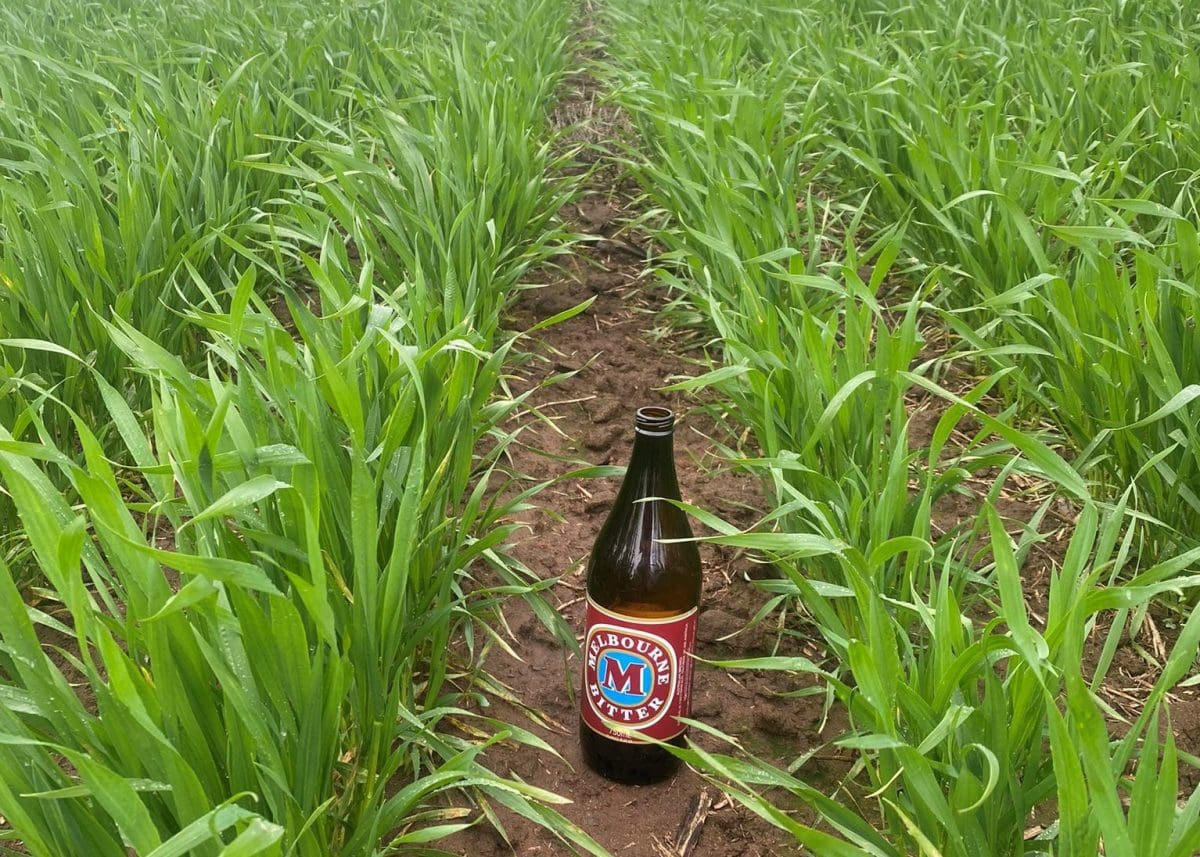
A crop of Scepter wheat passes the longneck test late last month at Minyip in the Victorian Wimmera. Photo: Ryan Milgate
PRICES for wheat and barley have climbed in the past week to reflect strengthening offshore values, and tightened logistics as caused by the New South Wales COVID lockdown.
While lockdown restrictions are not affecting grain movements within NSW, Queensland consumers are bidding up the local market to avoid bringing grain across the border this week.
Escalating cereal prices are making cottonseed and faba beans increasingly attractive for domestic stockfeed millers who are now accumulating for October-November.
| Nearby | New-crop | |
| Barley Downs | $300 up $12 | $300 up $16 |
| Wheat Downs | $345 up $5 | $338 up $18 |
| Sorghum Downs | $295 up $5 | $272 up $2 |
| Barley Melbourne | $285 up $5 | $290 up $6 |
| Wheat Melbourne | $362 up $14 | $360 up $11 |
Table 1: Indicative delivered prices in Australian dollars per tonne.
North goes local
While NSW’s COVID reported cases continue to climb, the Queensland Government is further easing restrictions in the state’s south-east as its cases return to zero.
Its tough border restrictions with NSW include requiring truck drivers travelling north to have had at least one COVID vaccination, or be undertaking rolling tests every seven days at most to ensure they are COVID negative.
Trade sources have told Grain Central this, and time delays in getting tests or vaccinations at the border, have had some consumers prefer to pay more than market fundamentals indicate they should for nearby wheat and barley.
“Logistics is the driver here, and COVID is one of the ingredients,” one trade source said.
“The further south you have to go to get grain, the dearer it is on freight, and doing back-to-back loads with freight is just too difficult at the moment.
“We don’t want to have any more freight exposure than we have to, and the consumer understands that and is paying a bit more to get local grain.”
Grain Central understands the vast majority of truck drivers and transport operators can comply with the Queensland Government’s tougher regulations.
However, and along with the trade, they have taken a cautious approach while the northern market settles into working around what could be weeks of tough entry restrictions on the Queensland side of the border.
The earliest of Queensland’s wheat and barley crops are starting to come off in central Queensland, and are filtering into domestic consumers and export pathways.
While the market continues to rally, growers are mostly sitting back waiting for further price improvements.
“There’s still a lot of grain on farm, but it’s not jumping out of the woodwork.”
Sorghum remains too dear to attract much interest from domestic consumers in Queensland, and is continuing to price into bulk export markets, with China being the main one.
Cottonseed competitive
Inclusion rates of cottonseed presently are at maximum levels because its pricing is competitive versus grain and protein meals.
Favourable water storage conditions and forward lint prices above $600/bale point to an expanded 2022 cotton crop, such that it will likely need more exports than this year to clear supply.
Export is made more critical since domestic crush demand collapsed following closure of the Narrabri plant three years ago.
Wet conditions this year slowed plant maturity, defoliation, picking, transport and ginning.
“Ginning has been a drawn-out affair this year. There still are dryland crops to be picked in the Gwydir Valley where gins will continue to operate into September,” Woodside Commodities manager Hamish Steele-Park said.
“Others are trying to wind up but there are still some bales to come in.
“Values current crop are between $305/t and $310/t ex Moree September 21 pick-up and about $355/t delivered Downs September.
“Southern NSW seed was quoted ex Riverina gins, September pickup at about $330/t.
“Buying interest DCT Melbourne October/November is quoting about $430/t.
New-crop 2022 is presently priced at an inverse to current crop.
Delivered Darling Downs gin spread 2022 was quoted $310/t.
Export competition prevails
In the southern market, exporters continue to book and load wheat and barley cargoes at a time when Australian basis normally makes it uncompetitive with Black Sea, European and North American origins.
“How many years have we been the cheapest grain in the world in October?” GeoCommodities broker principal Brad Knight said.
“We should continue to see grain disappearing over the ports, which will tighten old-crop.”
Farmers are believed to be reasonably well sold on old crop, and Mr Knight said growers were “not really engaging” on new-crop as they watched canola, lentils and cereal prices continue their rally.
Victorian crops are in good stead to achieve at least average yields if spring is kind to them, and Mr Knight said growers were cautious about over-committing.
“We had a dry and late start and a wet July, and there’s an air of cautiousness about spring.
“There isn’t much of a profile of subsoil moisture across the Wimmera and Mallee, and we’ll need a couple of rain events to get the crop home.”
Mr Knight said faba beans were stacking up as a good buy now that export shipments were slowing down, and consumers including the poultry sector were buying them as a cheaper alternative to protein meals.
“The trade’s accumulating for October-November now, and they won’t have much cover in new crop yet.”



HAVE YOUR SAY